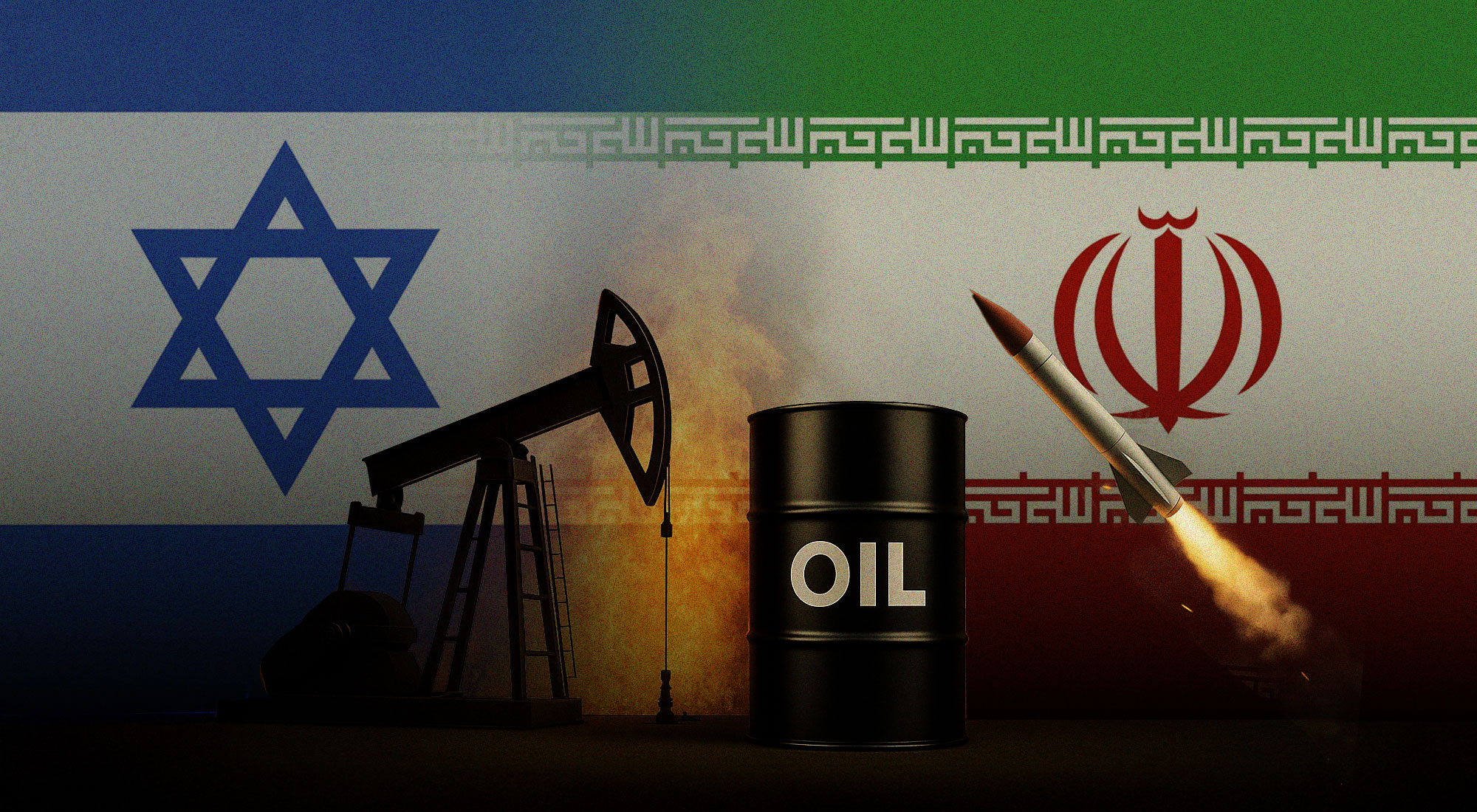According to a ground-breaking report, A New World: The Geopolitics of the Energy Transformation, issued recently by the International Renewable Energy Agency (IRENA), the global energy system is undergoing fundamental changes which will have a lasting geopolitical impact. Specifically, the Report argues that “energy transformation will alter the global distribution of power, relations between states, the risk of conflict, and social, economic and environmental drivers of geopolitical instability” or that “green energy will shift power balance from the oil countries to the small countries or will make resources, such as oil, irrelevant in the geopolitical games.” Furthermore, as the Report (page 55) notes, the shift to renewable energy may create a more peaceful world, as global and local confrontations over hydrocarbon reserves would diminish. The Report suggests that power shifts will occur primarily due to changes in the balance of trade. The focus on renewables will allow currently disadvantaged states create new comparative advantages. New geographies of trade will reshape relations of dependency between countries and regions and the nature of dependence itself will shift from global to regional interdependence. Geopolitical changes will, reportedly, include not only competition for energy, but also for transit routes along which this energy is traded (page 46 of the Report).
However, the problem with the shift to the renewables is the shift itself. Firstly, renewable generators are cheap to run but costly to build. Both production and distribution of energy require special institutional solutions and cross-border power grids, including the direct-current transmission lines, which are vulnerable to meddling. Regulating transnational grids will face the same political hindrances as regulation of any other transnational resources, be it rivers or gas distribution. The transboundary distribution of energy may become a bigger issue when it comes to disputed territories and areas of limited statehood. Storage of the produced energy and access to power grids is a vital political issue to be resolved before the shift takes place.
Secondly, whether the global and local conflict potential over energy resources would diminish or simply change names, would depend on whether an actual power shift takes place. The risk is that the same forces may remain in control of the grids. One resource could be substituted for the other (oil for renewables), but demand and supply chain, trade structure and culture of power may take time to change. Due to the high costs of such a shift and the associated political issues, the world’s most pressing problems, such as global inequality and conflicts may aggravate, unless this shift addresses not only technical development but also issues such as good governance and social welfare.
Renewables vs. Oil: Numbers Speaking
It is debatable whether the transformation to renewables will make oil irrelevant for geopolitics. According to OPEC Report from January 2019, world oil demand growth is estimated at 1.50 mb/d, with the OECD Americas leading the growth in the OECD region, while India, Indonesia, Singapore and Thailand are leading in strengthening product demand in the non-OECD world. In 2019, world oil demand is forecast to rise by 1.29 md/d, with China becoming one of the leading importers of oil. Demand for oil is growing globally. For instance, a multi-trillion dollar investment has been planned to satisfy demand. By all estimates, the extraction of oil and gas will be 25% greater in 2025 than in 2017. According to ExxonMobil, global oil and gas demand will rise by 13% by 2030, while in order to have a positive impact on the climate change, oil and gas production needs to fall by about 20% by 2030 and by about 55% by 2050. The recovery of oil demand has been noted by a number of research institutions. Furthermore, the political will to facilitate the big shift by the major players does not always seem to be there. The current US administration has noted that reducing oil demand is no longer an economic imperative.
Furthermore, in Europe and America, the biggest source of state revenue comes from 20 firms, of which four are major energy companies, for example Chevron, ExxonMobil, Royal Dutch Shell, BP and Total. The five oil majors still account for 10% of global oil and gas output and 16% of upstream investment. Notably, after the signing of the Paris Agreement on climate change, these major energy firms started investing in renewables, as a long-term commitment. However, the fact that these major players remain unchanged does not really support the hypothesis that there is a change in the balance of power, change of comparative advantage or shift of power to smaller economies. Considering the high costs of transition and convergence, the developed and stronger economies, as well as their major corporations would still remain the major stakeholders in this process. Hence, whether this energy transformation truly represents a power shift or simply a change of colours remains debatable.
At present, solar and wind produce only 8% of the world’s electricity, and far less energy for heating, cooling and transport, which are harder to decarbonise. Due to the intermittent nature of solar and wind energy, energy storage and sharing would become vital. In order to incorporate large quantities of renewables, interconnected power systems will be needed so that those with an abundance of clean energy can share it with those who lack it. This will recreate the vulnerabilities of cross-border pipelines, especially along the direct-current transmission lines—such as those proposed between north Africa and Europe—may be more at risk of meddling.[1] To date, clear regulations of the cross-border power grids exist almost nowhere in the world, with an exception of the European Union.
In other words, the actual power shift can happen when the underlying patterns, practices, and context of the energy transformation and related climate change and global development agenda become more harmonized. Revenue-based approach to renewables poses the potential risk of “the commodification of the ecological commons through green market solutions such as carbon trading, emissions offsets and biofuels, to sustain, rather than question, current trajectories of accumulation and consumption.”[2] Hence, the shift to renewables hides big risks, unless global actors take this as an opportunity to reprogram international development for the better.
One solution to avoid the zero-sum game in renewables is to depoliticise energy, rather than make renewables a new tool of geopolitics. Minigrids and localised solutions can help communities more than centralized supergrids. Some companies, for example the Chinese firm “Envision” or Germany’s Sonnen work towards developing an “operating system” for small-scale producers and users of energy. This approach may be more human-scale and more favourable for improvement of lives of local communities, however, they might be difficult to operate in disputed territories or areas of limited statehood.
In this light, the UAE energy strategy towards the Global South aims to overcome the above difficulties and support smaller economies in their shift to renewable energy. The UAE Green Diplomacy has already evolved as a fair and accountable strategy towards investment and development in developing countries. According to the UAE Energy Diplomacy Report, jointly produced by TRENDS Research and Advisory and Stimson Centre (Washington D.C.), the UAE has undertaken investment projects fostering green energy and the Sustainable Development Goals. One of them is the UAE-Pacific Partnership, which was announced in 2013 in direct response to a call from Pacific Leaders Meeting with IRENA. The joint Partnership committed an additional $50 million to support eleven renewable energy projects, including solar and wind farms, for small island states.
Cooperation between China and Saudi Arabia is another example of successful South-South cooperation. Several months after the US administration imposed global tariffs on imports of Chinese solar panels and cells, Chinese solar power manufacturer LONGi signed an agreement with Saudi trading company El Seif Group to establish large-scale solar manufacturing infrastructure in Saudi Arabia. The context for this cooperation is provided by China’s Arab Policy Paper which outlines areas of investment in the Middle East, including nuclear energy, space satellite and new energy. Saudi Arabia’s goal of developing 58 gigawatts of solar power by 2030 makes the country an attractive manufacturing destination for foreign firms.
Besides the business solutions, it is possible to merge the foreign aid and humanitarian strategy with green diplomacy and technological innovation in the field. For example, the UNHCR has installed solar panels in refugee camps around Jordan, a project, which has proven to contribute to people’s welfare, education and safety. Hence, while the massive shift to the green energy will take time, renewable energy provides the potential to address the welfare of the world’s most vulnerable populations at the grassroots, on a daily basis.
Concluding Remarks and Policy Recommendations:
Taking into consideration the above factors in supply and demand, institutional preparedness and the transnational character of energy, it would probably be more realistic to talk about the shift to mixed types of energy, rather than purely to renewables in the foreseeable future. Fossil fuels, including oil and gas, will remain important components of the energy mix, in order to meet the global demand focommr oil. However, renewable energy will definitely become the game-changers in all terms, be it politics, security, climate change, technology or even education and culture, because this shift would require new skills at the societal level and new governance practices at the state level. Furthermore, organising and managing the mixed energy landscape will face a dilemma of large-scale networks vis-à-vis localised networks and community-based management of solar and wind energy. While fossil fuels are sold on a premise of scarcity, solar and wind are abundant but intermittent. What mechanisms would regulate these trends – market-based or state-based – would be another dilemma to solve.
In sum, there are a few implementation difficulties and policy risks that need to be considered, when addressing the energy transformation:
- Green energy is cheaper than fossil fuels, but the transition is costly. Today, convergence and transition costs are high and affordable only by the strong economies. A rapid shift to renewables without the existing system of subsidies for the transition costs may cause an increase in inequality between the developed and the developing worlds.
- Innovations in green and renewable energy in the transport sector are still delayed. It is necessary to develop storage for the excess of renewable energy, which could also be used for vehicles.
- Institutional inadequacy: as the Report rightly notices, regional markets will become more decisive than the global ones. However, existing institutions are not yet ready to manage the cross-border power grids, except the ones in Europe. While centralised supergrids have their disadvantages, the efficiency and safety of the small-scale power-grids would also be problematic, especially in the case of areas with limited statehood.
- Is the “green world” a more peaceful one? In spite of the significant achievements in cost reduction in the renewable energy sector, it seems to maintain existing structural constraints of the world economy and not really consider the impact of that shift on development and improvement of human welfare.
- The renewable energy sector focuses mostly on the sectors which are more conducive for returns on investment (such as solar energy) and neglects water, as returns in this sector are low.
- Global inequality and the development agenda need to become part of the emerging institutional architecture in the shift to renewable energy.
- The shift to the renewables would require further reforms and economic diversification at the local, national and global levels.
In spite of the various scenarios for the energy transformation—as The Geopolitics of the Energy Transformation Report rightly notices—the shift to the renewables is needed. Properly designed, they can be applied to promote social justice and human welfare, encourage local empowerment and local wealth generation, contribute to safer climate, improve public health, and advance gender equality and educational opportunities” (page 69 of the Report). While the transformation still requires the change in the demand and supply chains, global and regional market structures and institutions, green energy and green diplomacy can definitely become the game changers. And if managed well, it does not have to be a zero-sum game.
Endnotes
[1] Karen Smith Stegen 2018. “Redrawing the Geopolitical Map: International Relations and Renewable Energies,” in Scholten, Daniel (Ed.) The Geopolitics of Renewables. Springer International Publishing AG.
[2] Philip McMichael 2009. “Contemporary Contradictions of the Global Development Project: Geopolitics, Global Ecology and the Development Climate,” Third World Quarterly 30 (1): p.247








